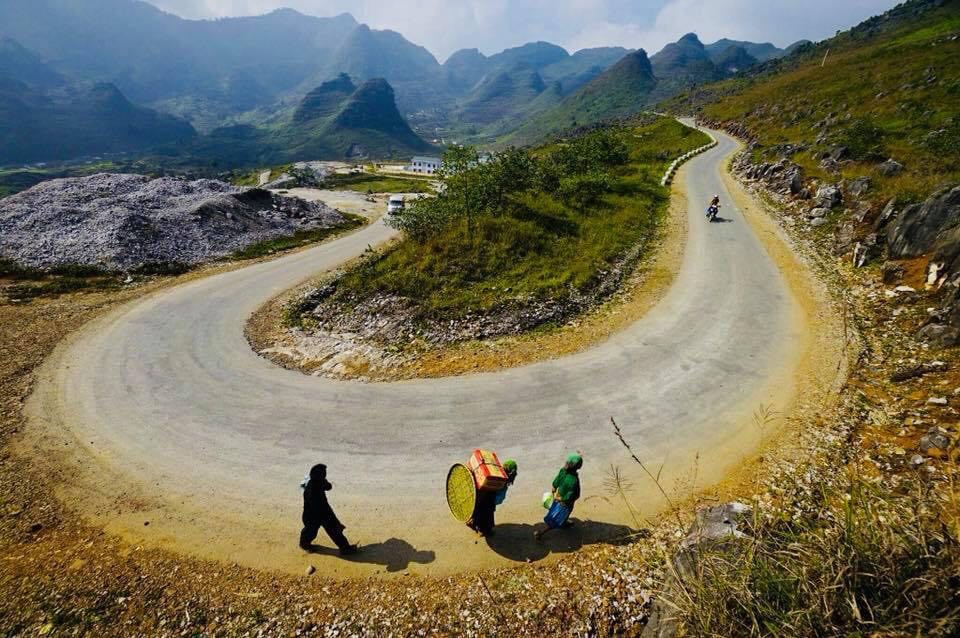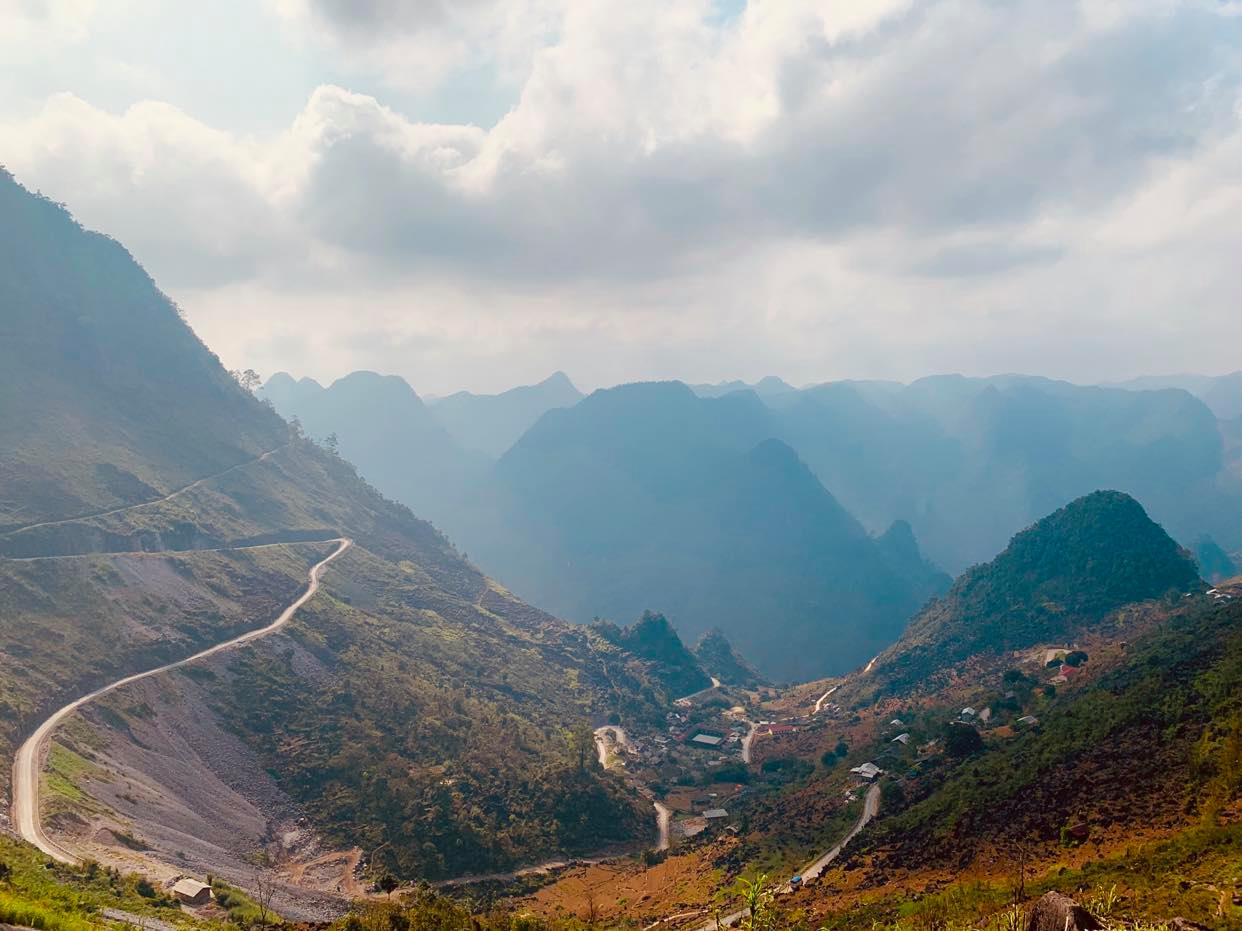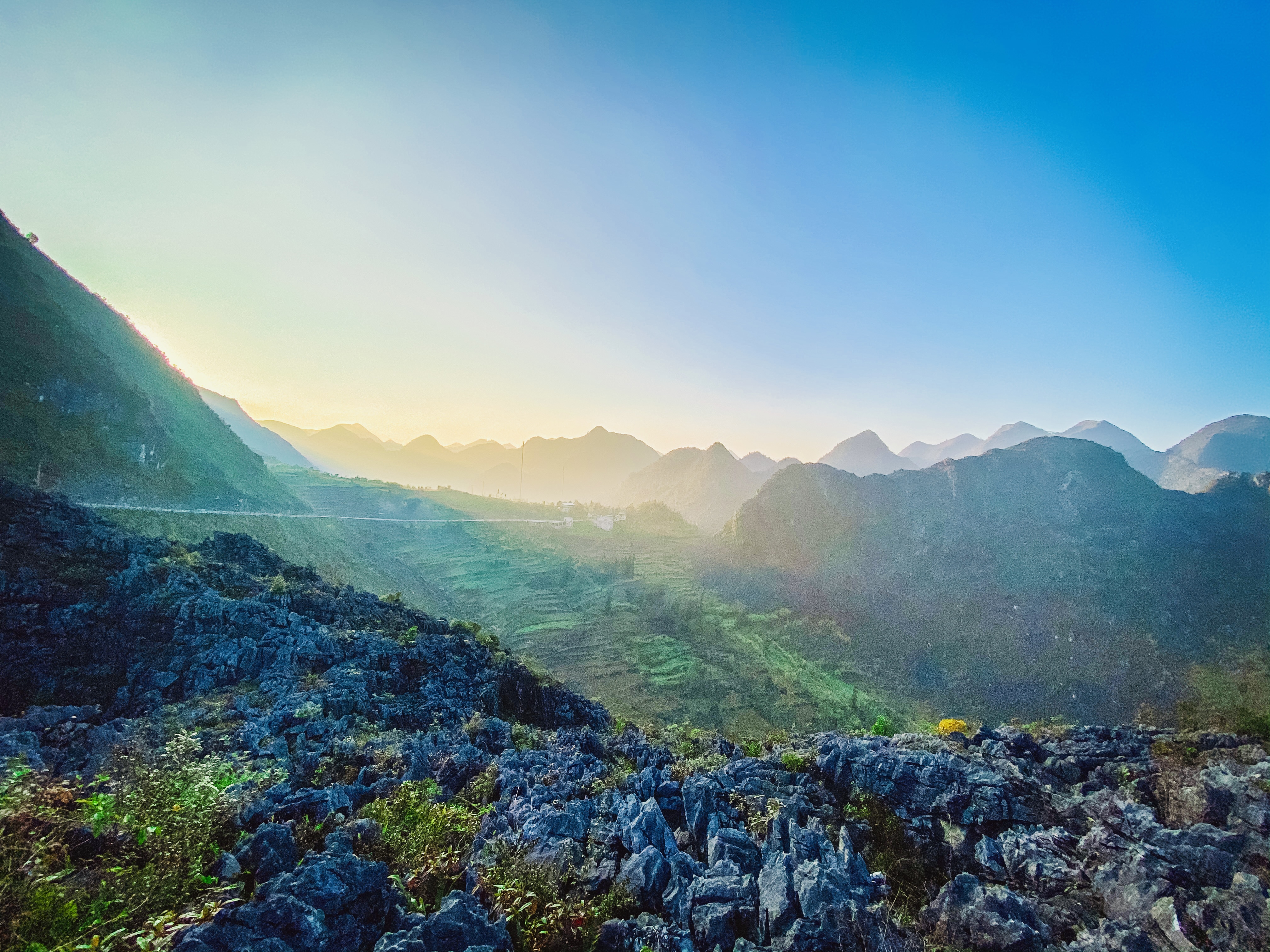To many, the northern mountainous province of Ha Giang is a bucket list item - not only for its cuisine and beautiful landscapes but also for the poetic and adventurous roads which wind through its majestic landscapes.
To get to Ha Giang, most visitors take a night bus from Hanoi and make it to the city by dawn, when thin lights begin to peak over nearby mountain tops and drive the cold away.
 |
| Mountainous landscape in Ha Giang. Photo: Phuong Tran / Tuoi Tre News |
From there, a short bus ride is needed to reach Dong Van Town, where many tourists choose to begin their trip. As Dong Van is a mountainous locality with limited access, it would not be a surprise for travelers to find themselves sitting on unbelievably crowded bus, especially during high tourism seasons.
After arriving, many choose to explore the locality on a motorbike rented from one of several services available in Dong Van.
Dong Van’s old town is home to the area’s best accommodation. The neighborhood is filled with historic wooden houses that have been remodeled to welcome guests who wish to experience the local lifestyle.
 |
| A woman carries a child on her back while walking on a path in Pho Cao Commune in the northern mountainous province of Ha Giang's Dong Van District. Photo: Phuong Tran / Tuoi Tre News |
In the evenings, tourists can check out the night market for a taste of local specialties, such as “thang den” (a sweet dessert of rice flour balls cooked in a sugar water with sesame seeds and peanuts), “banh tam giac mach” (a cake made from buckwheat), grilled meat served with “com lam” (grilled rice stuffed in bamboo sticks), and “chao au tau” (porridge cooked with “au tau” - a local herb).
Visitors should also be sure to check out Lung Cu Commune, about 40km from Dong Van, where there are dozens of opportunities to experience the lifestyle of the ethnic Lo Lo people.
 |
| Women in traditional clothes of Lo Lo people are seen in a photo taken at Lung Cu Commune in the northern mountainous province of Ha Giang. Photo: Phuong Tran / Tuoi Tre News |
This beautiful village overlooks the Lung Cu flagpole, Vietnam's northernmost landmark and a famous check-in spot for many young Vietnamese tourists.
With few food and drink services available in the area, tourists should rely on homestay owners to cook up a rich menu of local dishes, such as black chicken and fresh vegetables.
Ha Giang is surrounded by serene mountains and forests which overlook the beautiful village paths alongside gardens of corn and blossoming rapeseeds.
Local tourist destinations include the Palace of Hmong King Vuong Chinh Duc, which has been ranked as a national relic; Dong Van rock plateau; Ma Pi Leng pass; the Nho Que River; and Quan Ba Heaven Gate.
 |
| Local people walk on a stretch of Ha Giang Loop in the northern mountainous province of Ha Giang. Photo: Quang Dinh / Tuoi Tre News |
Each of the sites offers visitors a breathtaking journey along the winding roads of the famous Ha Giang Loop.
Quan Ba Heaven Gate, for example, cuts through the rocky mountains with a rest stop overlooking the magnificent view of a rocky plateau.
Meanwhile, Ma Pi Leng Pass, one of the four great passes of northern Vietnam, is not far from Dong Van.
From Ma Pi Leng, visitors can take a steep and narrow road to the bank of the Nho Que River, where they are advised to treat themselves a boat ride surrounded by mountain overlooking the river.
 |
| A stretch of the Ha Giang Loop in the northern mountainous province of Ha Giang. Photo: Phuong Tran / Tuoi Tre News |
Motorbiking promises to offer visitors off-the-beaten-path experience, however, the roads are quite dangerous so if visitors are not confident about their driving skill, they are advised to take “xe om” (motorbike taxi) service provided by locals.
The best time to travel to Ha Giang is in autumn, when the area is covered yellow rice fields.
Visitors can also travel to Ha Giang in Spring, when flowers bloom and locals don colorful costumes.
However, regardless season, the locals of Ha Giang people seem to maintain their peaceful lifestyle.
When the sunset falls on the mountain slopes, those hardworking people return home with large bundles of firewood on their backs for cozy gatherings around a fire.
 |
| Mountainous landscape in Ha Giang. Photo: Phuong Tran / Tuoi Tre News |
Like us on Facebook or follow us on Twitter to get the latest news about Vietnam!























